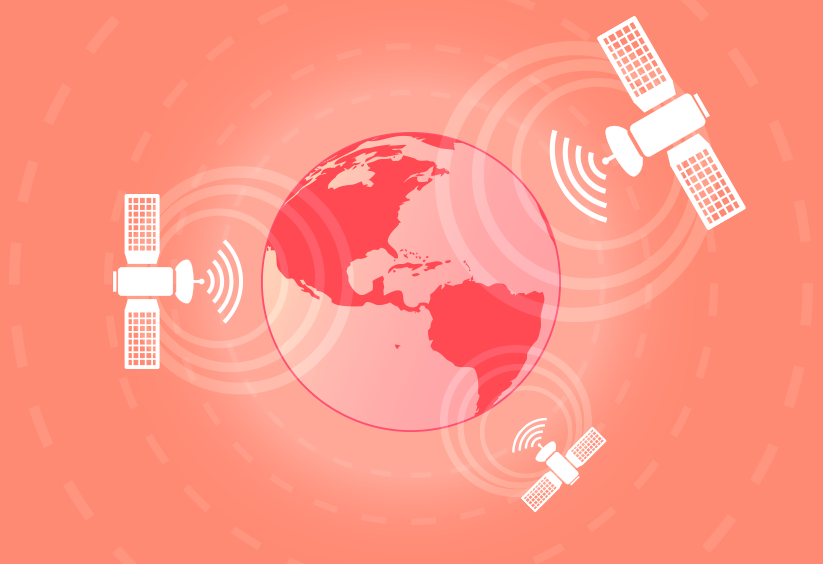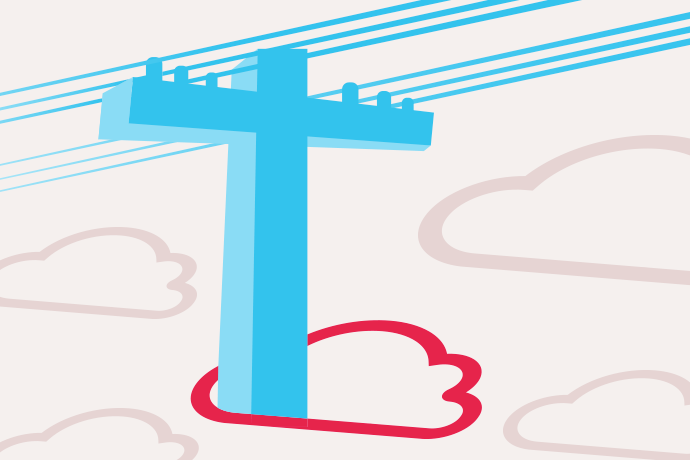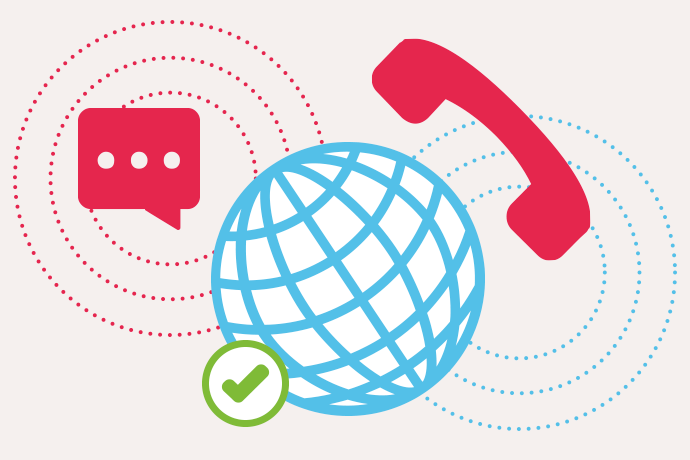Basket Total
£0.00
-
Your shopping basket is empty
Loading

Hello! Log in Your Account
New customer? Start here
inc VAT
ex VAT


|
3 min read
Contents
Quick Summary
VoIP phone system global reach - how new developments in satellite broadband deployment could give your cloud phone system
In case you haven’t heard, there’s a new space race underway and this one is privately owned. Competing to perform a feat that is essentially, as Elon Musk put it in a Seattle speech from 2015, “rebuilding the internet in space”, in order to, as per OneWeb’s mission statement in a January press release, “connect everyone everywhere”, companies like Amazon, SpaceX and the aforementioned OneWeb are either currently launching or planning to launch low-orbit constellations of satellites.
This scene out of science fiction sees fleets of satellites working together, handing over via lasers (seriously - space lasers), for the purpose of bringing broadband connectivity to the widest service area ever seen, eliminating connectivity dead zones and improving connectivity in areas that are currently “unserved or underserved” (Project Kuiper) when it comes to broadband speeds and/or connectivity reliability.
Better coverage is certain. Many developing nations including India, sub-Saharan Africa and areas of Latin America still have very poor internet penetration with, according to some estimates, half of the world’s population still without internet access.
Moreover, FTTP connectivity is prohibitively expensive even for many of those in a developed country like the UK, where government incentives like the Gigabit Broadband Voucher Scheme are required to stimulate contributions from local communities, implying how expensive it can be for local authorities or ISPs to lay cable or erect masts, meaning that, for many of these developing nations, deep internet penetration for the general population via traditional means is still far off.
However, given that satellites are not bound by the same accessibility restrictions as cabling, which has to be routed through the ground in each and every location access is required, it seems hopeful that, once these satellite constellations are in orbit, broadband connectivity will be accessible to areas once burdened by slow and temperamental (or even non-existent) broadband connectivity.
As a VoIP provider, Yay.com are excited anytime we hear about improvements in connectivity since connecting people is our business! As the name VoIP (Voice over Internet Protocol) implies, you need an internet connection to transmit the voice data (ie, to make calls). If internet penetration is set to almost double with the new developments discussed here, then a lot more people could be using VoIP phone systems soon!
According to reports, better or comparable speeds are highly likely as well. OneWeb have made clear in their January press release that they are working with telecoms providers to bring “ubiquitous, high-speed satellite “fibre-like” broadband services coverage” to urban as well as “remote and inaccessible areas”.
Moreover, if SpaceX and Amazon are to compete with OneWeb, then they must offer a similar or better level of service. SpaceX has already allegedly demonstrated data throughput of 610Mbps to a US military aircraft in-flight so, if consumer speeds are not too far off this, it seems plausible that satellite-broadcast broadband could soon be delivering close-to-gigabit speeds even to remote regions.
That does it for part one. Check back next week for a discussion of when you might be able to start taking advantage of this new technology, as well as where we think the biggest impact will be seen.


Explore how Skype's end-of-life announcement presents an opportunity for small businesses to upgrade their Skype number to a VoIP phone system.
Posted 10 March 2025 | 6 min

Everything you need to consider when moving offices, from hardware to call quality.
Posted 16 January 2025 | 6 min

Corded headsets vs wireless headsets? Learn about the key considerations when purchasing a VoIP headset for your VoIP phone system and softphone apps.
Revised 3 December 2024 | 9 min

VoIP is incredibly well suited to being the phone system for businesses of all sizes. Large businesses in particular can benefit from great scalability, bulk-deployment options and more.
Revised 21 August 2024 | 8 min

Examining the differences between VoIP and PSTN communications solutions and VoIP benefits.
Posted 16 July 2024 | 5 min

Get your business up to speed before the PSTN and ISDN switch off in 2027. Discover what digital VoIP technologies will mean for business landlines in the future.
Revised 15 July 2024 | 6 min

With the upcoming switch from PSTN to VoIP, we look at what processes other countries have taken when they decided to migrate their own copper line networks.
Posted 1 August 2023 | 6 min

VoIP apps or VoIP desk phones, which is better and why? We discuss how VoIP desk phones could be obsolete with the availability of greater and more powerful VoIP apps .
Revised 2 November 2022 | 7 min

Cloud VoIP phone systems offer key advantages for businesses. Here are 13 of VoIP's key benefits that have helped to drive the adoption of business VoIP.
Revised 10 May 2022 | 12 min

How cost-effective is VoIP? Is VoIP secure? How fast does my Internet need to be? We answer these questions and more.
Posted 11 January 2022 | 5 min

VoIP won't work without the internet, but that doesn't mean you need a wired broadband connection. A supplemental mobile cellular data network (4G, 5G, LTE) can make VoIP calls possible even if broadband is unavailable.
Posted 11 January 2022 | 5 min

Offer great customer service, but do so efficiently. Automate aspects of your phone system and provide self-service information to free staff resources.
Posted 24 September 2021 | 4 min

Call recording is a feature of good VoIP phone systems that allows customers to record their business calls, then playback and download them.
Posted 17 September 2021 | 6 min

Large corporations have requirements that surpass the capabilities of most phone systems. With Yay.com build your ideal business phone system effortlessly.
Revised 25 August 2021 | 5 min

A good business phone system will help you run day-to-day operations more efficiently and effectively. Here are 5 ways yours can improve customer satisfaction.
Posted 19 August 2021 | 4 min

Features like call parking and shortcodes can boost the efficiency of your business phone system, saving your teams time.
Posted 18 August 2021 | 6 min

Learn what VoIP 'QoS' or Quality of Service is and why your business network needs it configured for the best VoIP experience.
Posted 9 March 2021 | 3 min

With Yay.com's free VoIP trial you can try business VoIP for free for fourteen days - no credit card required. Enjoy all of our powerful business phone system features at no cost.
Posted 3 December 2020 | 4 min

Business VoIP makes it possible to work from anywhere. We'll get you up and running for working from home, no matter whether you prefer VoIP desk phones or VoIP apps.
Posted 12 November 2020 | 3 min